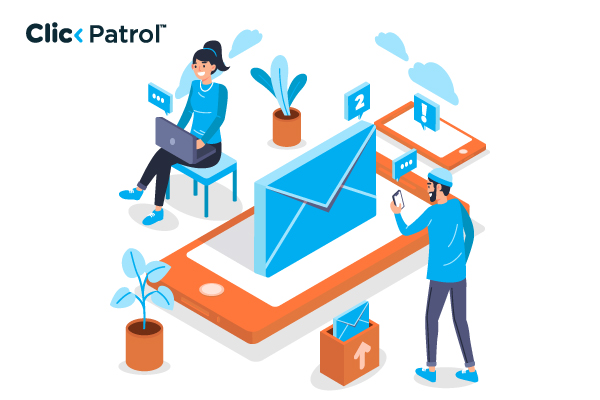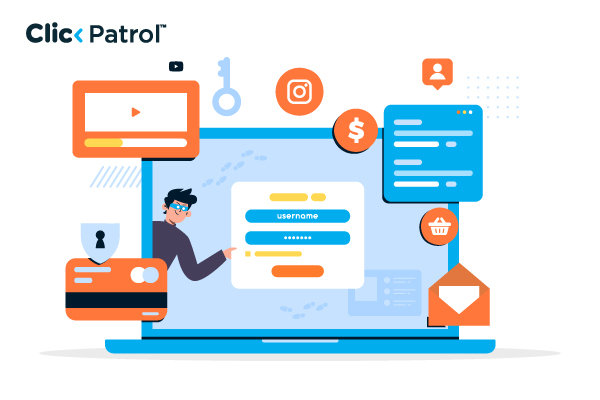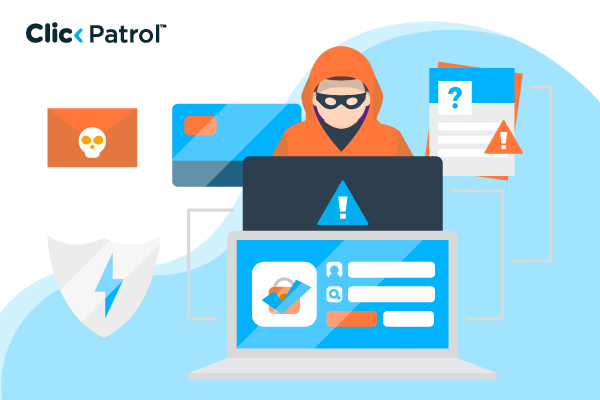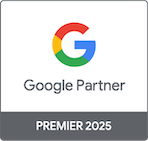A click bot is automated software that generates fake ad clicks, wasting ad revenue without producing conversions.
How to detect click bot activity on your PPC campaigns
Abisola Tanzako | Oct 23, 2025

Table of Contents
- What are click bots in PPC campaigns?
- Types of click fraud and why it is essential to detect click bots
- Signs that click bots may target your PPC campaign
- How to detect click bots in PPC
- How to prevent click bot damage in your PPC campaigns
- Case study: How Oliverson & Huss fought click bots in Google Ads
- Best practices for detecting click bot activity
- Protecting your PPC campaigns from click bots
In 2023, ad fraud cost an estimated $84 billion globally, with a significant portion attributed to automated clicks. That is why it is crucial to detect click bots and protect PPC campaigns that drive online growth.
But they are increasingly targeted by click bots, automated programs that mimic real users to generate fake clicks. These bots drain ad budgets and distort campaign data.
They make it hard to know what is actually working. Detecting and stopping click bots is no longer optional. Protecting your budget and ensuring accurate performance data requires identifying unusual patterns in clicks and engagement, and taking action against potential fraud.
This guide shows you how to identify click bot activity, use advanced detection methods, and apply best practices to safeguard your PPC campaigns.
What are click bots in PPC campaigns?
Click bots are automated scripts that generate artificial clicks on PPC ads. They can appear for malicious or competitive reasons, including:
- Competitor sabotage: Rivals exhaust your ad budget, reducing visibility.
- Publisher fraud: Websites inflate clicks to earn higher ad revenue.
- Disruption attacks: Malicious actors aim to cause financial harm.
Types of click fraud and why it is essential to detect click bots
Click fraud is not limited to bots. Understanding other types helps detect click bot patterns:
- Click bots (Automated fraud): Fast, repetitive clicks, often from multiple IPs or bot farms.
- Manual click fraud: Humans are paid to click on ads, making it harder to detect, but it typically results in low conversion rates.
- Competitor click fraud: Rivals use VPNs or devices to drain your budget.
- Publisher click fraud: Combines real and fake traffic for revenue gain.
- Sophisticated fraud (Hybrid): Combines automation with human behavior, necessitating the use of AI tools for detection.
It is essential to detect click bots for the following reasons:
- Wasted Ad spend: Bots consume your budget without delivering real leads.
- Distorted analytics: Fake clicks inflate CTRs and engagement, misleading optimization.
- Lower ROI: Bots rarely convert, resulting in a reduced return on ad spend (ROAS).
- Lost competitive advantage: Early budget exhaustion can give competitors more exposure.
Signs that click bots may target your PPC campaign
Signs that click bots may target your PPC campaign include:
- Abnormally high clicks without conversions.
- Low or zero conversions despite high click volume.
- Repeated clicks from the same IP address.
- Odd timing patterns, such as clicks at regular intervals or late-night surges.
- Unusual geographic sources that don’t match your target audience.
- Short session durations, with users leaving immediately.
- Identical device fingerprints are appearing multiple times.
- CTRs are far above industry benchmarks without results.
If you notice any of these signs, it is time to take action.
How to detect click bots in PPC
Advanced methods to detect click bot activity in PPC include:
- Analyze log files: Track IPs, timestamps, and user agents for unusual patterns.
- Monitor analytics: Bounce rates, session durations, and geography reveal anomalies.
- IP Tracking and exclusions: Block repeated clicks from suspicious addresses.
- Check Proxy & VPN traffic: High anonymous traffic may indicate the presence of bots.
- Compare with conversion data: Many clicks with few conversions indicate potential fraud.
- Honeypot practices: Hidden fields or buttons reveal bots without disturbing real users.
- Click timing analysis: Look for consistent intervals or rapid clicks.
- Utilize third-party tools: AI-driven tools, such as ClickPatrol, detect and block bots in real-time.
How to prevent click bot damage in your PPC campaigns
How to prevent click bot damage in your PPC campaigns includes:
- Enable platform protections in Google Ads and Microsoft Ads.
- Block suspicious IPs and refine geo-targeting.
- Schedule ads during business hours to avoid late-night bots.
- Monitor traffic sources and avoid poor placements to optimize your online presence.
- Layer in third-party fraud detection solutions.
- Use CAPTCHA on landing pages.
- Audit campaigns regularly.
- Maintain negative keyword lists to filter irrelevant traffic.
- Combine AI detection with human oversight.
Case study: How Oliverson & Huss fought click bots in Google Ads
Oliverson & Huss, a criminal defense law firm in Arizona, used Google Ads to attract clients. Legal keywords were expensive, with CPCs ranging from $50 to $150.
Their daily $700 ad budget initially produced good results, but when suspicious traffic increased, they began to detect click bot activity early.
They utilized advanced tools to detect click bot traffic, applied filters to identify click bot behavior, and established automated rules to detect click bot attacks in real-time.
Within weeks, costs skyrocketed to over $2,000 per day, but the number of leads and calls remained unchanged. The investigation revealed typical clickbot activity, including repeated clicks from the same IP addresses, unnaturally high mobile traffic, short sessions, and surges during late-night hours.
The firm implemented ClickPatrol, an AI-driven fraud detection tool, to block suspicious IP addresses in real-time. Within a month, Oliverson & Huss saved approximately $6,000 in wasted spending, regained campaign performance, and could safely scale their PPC strategy.
Best practices for detecting click bot activity
The following best practices will help you identify click bot activity, stop click fraud, and keep your PPC campaigns performing at their best.
- Monitor analytics closely: Track bounce rates, session duration, CTRs, and geographic sources. Unusual spikes or patterns may indicate bot activity.
- Check IP addresses and repeated clicks: Look for multiple clicks from the same IP address or a range of IP addresses. Block suspicious addresses to prevent budget waste.
- Compare clicks to conversions: High click-through rates with low conversions often indicate fake traffic. Always measure meaningful actions, not just clicks.
- Analyze traffic timing: Bots often click at unnatural intervals, like perfectly timed bursts or late-night surges. Monitor for consistent patterns.
- Examine device fingerprints: Multiple clicks from the same device can indicate automated activity.
- Use server logs: Review logs for repeated patterns, outdated browser signatures, or abnormal traffic sources.
- Check proxy and VPN traffic: High traffic originating from anonymous proxies or VPNs can indicate the presence of bots. Not all VPNs are malicious, but suspicious patterns should be flagged for further investigation.
- Implement honeypot techniques: Hidden buttons or fields on landing pages can trap bots without affecting real users.
- Utilize AI-powered detection tools: Tools such as ClickPatrol, CHEQ, or TrafficGuard detect and block bots in real-time, providing more advanced protection than manual methods.
- Audit campaigns regularly: Conducting weekly or bi-weekly checks helps identify unusual trends early, preventing budget waste.
Refine targeting: Limit ads to your core audience and remove placements or regions that consistently attract suspicious traffic. - Leverage platform protections: Enable invalid click filters in Google Ads or Microsoft Ads to automatically block known fraudulent clicks.
- Layer human oversight with automation: Combine AI tools with manual monitoring to catch sophisticated bots that might bypass automated detection.
Protecting your PPC campaigns from click bots
Click bots don’t just waste clicks; they steal opportunities. Every fake click reduces budget for real prospects and distorts campaign metrics.
The fight against click fraud is not lost. With careful monitoring, smarter targeting, and AI-powered tools, you can effectively manage your ad spend.
Protect your campaigns with ClickPatrol and ensure every click counts toward real customers.
Frequently Asked Questions
-
What is a click bot in PPC advertising?
-
How can I tell if my campaign is targeted by click bots?
Look for spikes in clicks, high CTRs with no conversions, unusual geographies, and repeated clicks from the same IP.
-
Does Google Ads automatically block click bots?
Partially. Most advertisers need third-party tools for stronger protection.
-
Can I block click bots myself?
Yes.
Exclude suspicious IPs, refine geo-targeting, and adjust ad schedules. Sophisticated bots may still need specialized tools. -
Can CAPTCHA prevent click bots?
CAPTCHA can filter bots on landing pages, but it will not stop bots from clicking ads.






